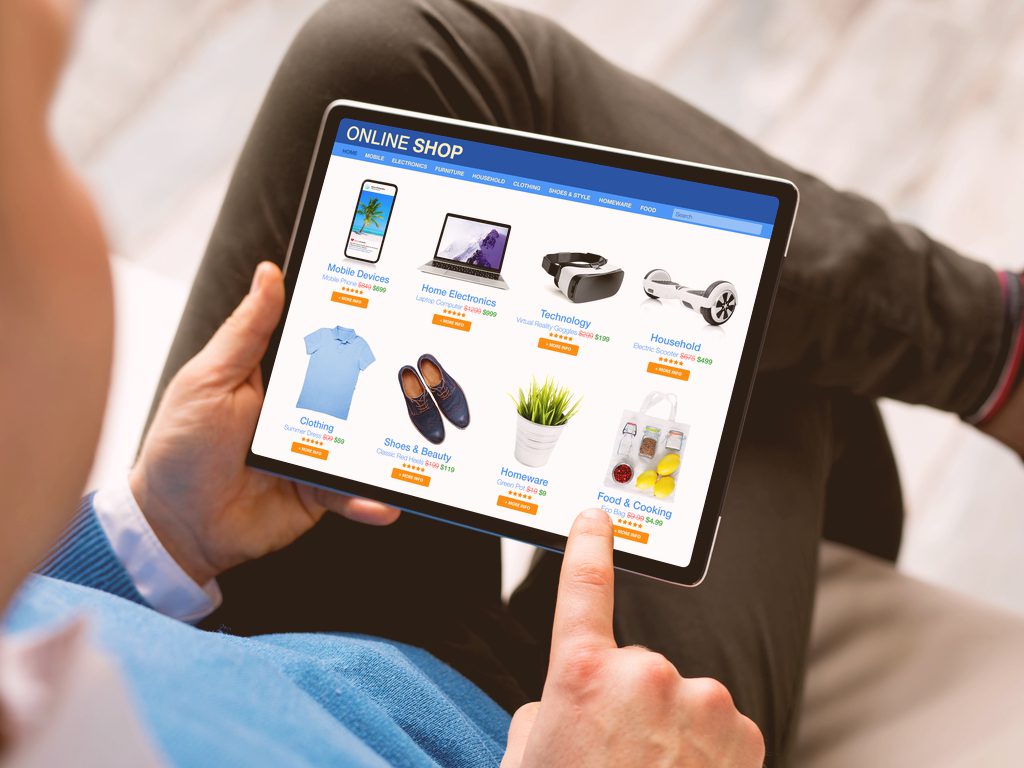Whether you’re already selling on Amazon, or it’s one of your business goals for 2022, it’s vital that you’re making use of the latest marketing strategies. Why? Because Amazon is one of the world’s largest marketplaces and competition between merchants is fierce. Use the marketing strategies detailed below and you’ll give yourself a huge advantage in 2022…
Get the basics right: Amazon SEO
One of the easiest, yet most overlooked marketing strategies amongst Amazon merchants is SEO.
Standing for Search Engine Optimisation, SEO involves optimising multiple factors for each of your products to increase the likelihood they will appear in your target customer’s search results.
Amazon, like any other search engine, wants to provide customers with the most relevant products in relation to their searches.
As such, Amazon gives priority to products which tick all of the ‘SEO boxes’. The latest officially announced algorithm from Amazon is ‘A9’ (although there have been updates referred to as A10 recently) which takes several signals into account when deciding upon search rankings.
To help you tick those Amazon ‘A9’ SEO boxes, we’ve set out the things you should be paying attention to below.
Product title
This is arguably the most important thing in your product listing; after all, it’s the main thing potential customers will see when searching.
When writing a title it’s important that you don’t just include the generic name e.g. laptop stand. Include additional, related, keywords which will help your product appear for broader searches e.g. adjustable ventilated laptop stand for MacBook Pro.
Keywords
Tagging your products with keywords will help your product show up not just in direct searches, but in ‘long tail searches’ (such as when a consumer is looking for something very specific).
Amazon allows you to add up to 250 characters on the backend of each product page.
Think carefully about what combination of keywords you choose. Remember, if you’re a small independent merchant, you’ll be unlikely to rank well for very competitive keyword terms. Instead, think of niche groups of keywords that’ll help you ‘break through’.
Product descriptions
Good quality product descriptions will not only help make your product more ‘visible’ from an SEO perspective, but will also help you stand out from the competitors.
We’ve seen far too many instances of merchants simply copy and pasting generic descriptions on to their product pages. This doesn’t do anyone any favours!
Images
Don’t forget to use images! And, when we say images, we mean good quality, clear images that clearly show as much of the product as possible. Show every possible angle and make sure you stick to Amazon’s comprehensive product image guidelines.
Q&A
Amazon will favour product pages that have an informative Q&A section. This shows that you are an engaged and proactive seller that is willing to answer a potential customer’s query.
What’s more, a Q&A section will be a useful resource in its own right, acting as a ‘silent salesman’ and helping you to sell your product.
Affiliate Marketing
Once you’ve nailed the basic details and ensured that all of your products meet the SEO essentials, you can look at other marketing strategies that can help turbocharge your sales.
One of the most popular and effective of these strategies is Affiliate Marketing.
Amazon has an incredibly popular affiliate marketing programme which allows the owners of websites, influencers and other content creators to advertise products from Amazon on their platforms.
When people click on these affiliate links and make a purchase, the website owner, influencer or content creator earns a commission.
For merchants, the Amazon affiliate programme is free and simply involves paying a commission to affiliates who successfully generate sales for your business. Commissions can be up to 12% of the product price, but this percentage varies depending on the affiliate, the platform they are linking from and more.
Before embarking on affiliate marketing for your Amazon store, bear in mind that it will likely involve the recruitment and management of a range of affiliate partners. You’ll usually have to negotiate the commission rate and potentially a variety of other factors too. If you’re not up for that, then affiliate marketing probably isn’t for you.
Amazon Ads
If you want to go beyond SEO and Affiliate Marketing, then your next step is to engage with Amazon Ads.
Amazon Ads is a platform that allows you to buy adverts to reach new and existing audiences across Amazon and a range of Amazon-owned platforms (such as Fire TV sticks, IMDb.com, Kindles, Freedive and myriad third-party partners and apps).
Amazon Ads allows you to make use of a variety of ad formats to reach new customers. At the time of writing, these ad formats include:
- Sponsored products – showcasing your individual products in Amazon shopping results.
- Sponsored brand – showcase your entire brand with adverts that appear in Amazon shopping results.
- Sponsored display – these display ads provide a visual way of promoting your brand, or an individual product, both on and off Amazon.
- Video ads – place video adverts of your brand or products either on Amazon Prime TV or online on Amazon or Amazon-related websites.
- Audio ads – Amazon Music allows you to place audio adverts mid-stream to promote your brand or products.
It’s also possible to buy ads via Amazon Demand-Side Platform (DSP) which uses programmatic, automated technology to buy ads on your behalf. This takes out much of the manual work traditionally involved with running digital ad campaigns.
Be prepared for voice search
With all of the above strategies in place, you’ll be in a great place to dominate your particular niche on Amazon in 2022.
But, are there any unexpected ‘curveballs’ to look out for next year? Well, yes, there is.
Voice-based search.
Since the launch of Amazon Alexa in 2013, consumers have increasingly been using their smart home device to search for, and order, products.
To put this into perspective, as of 2021, 21% of smart speaker owners have said they have used their devices to shop for items. If you’re not optimising your product listings to take account of voice search, then you could be missing out on custom from a huge chunk of Amazon users!
Smart speakers such as Amazon Alexa use a combination of automatic speech recognition, natural language processing and basic artificial intelligence to serve up results to searchers.
The best way to ensure your products appear for these ‘voiced’ queries is to engage in voice search SEO (yes, that’s actually a thing).
Voice search SEO
Below are some quick, easy-to-implement actions that’ll help you optimise your Amazon product listings for voice search SEO.
Use conversational copy
Because voice search is based on speech, you need to ensure that your product descriptions sound natural and aren’t just rammed full of keywords.
Ensure that you appropriately use semantics and natural syntax to create product copy and it’ll be more likely to appear as a search result.
Use structured product descriptions
Think about the kind of questions a searcher is going to be asking, and then structure your product description appropriately.
In other words, put the most important information at the top. Then, use subheadings structured as questions throughout the rest of the product description. This will help the smart speaker to find the right information to provide an answer to the searcher.
Create a FAQ or Q&A section
If you’ve read this far, then you’ll know you should already have an FAQ or Q&A section on each product page just for basic SEO purposes.
However, a well thought out and in-depth Q&A section can help you come out on top for voice searches. This is because Q&A sections generally contain the type of questions people commonly ask smart speakers.
To make sure you’re as optimised as possible, don’t wait for the questions to come to you. Think of every possible question that could be asked about your product, and answer it in the Q&A/FAQ section.
Sign up for Amazon FBA or Seller Fulfilled Prime (SFP)
There’s no getting away from the fact that Amazon is a closed network. If you want to succeed on the platform, then you have to do it on their terms.
Whilst signing up to Amazon FBA or SFP doesn’t guarantee that you’ll appear at the top of the search results for your products, it certainly helps. Amazon is known to favour merchants that use FBA or SFP over those that don’t.
After all, Amazon gets more of a cut from merchants that use these two services.
But don’t worry. If you’re worried about dealing with the logistics, admin, and complexities of Fulfilled By Amazon (FBA) or Seller Fulfilled Prime (SFP), there are companies that can do it for you – namely, 3PL.
3PL’s award-winning SFP, FBA and FBA Prep services, in addition to the marketing strategies outlined above, can help make 2022 your best year ever on Amazon!
Find out more about outsourcing your Amazon fulfilment with 3PL today
For more eCommerce business, marketing and fulfilment advice, read the 3PL blog…
Why You Should Use a 3PL for Your Amazon Fulfilment | Is Amazon Seller Fulfilled Prime Worth It? | Amazon FBA or FBM?







